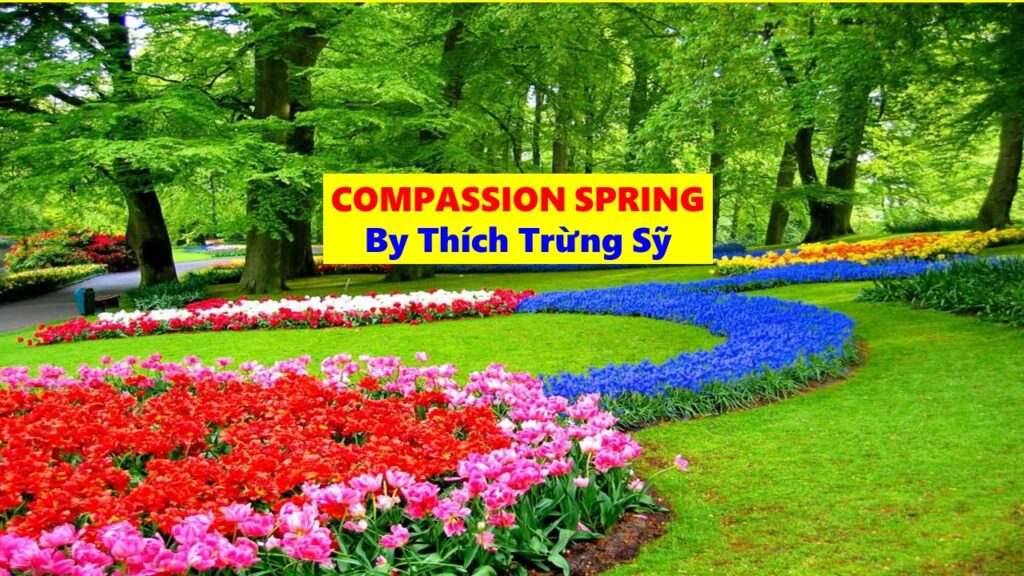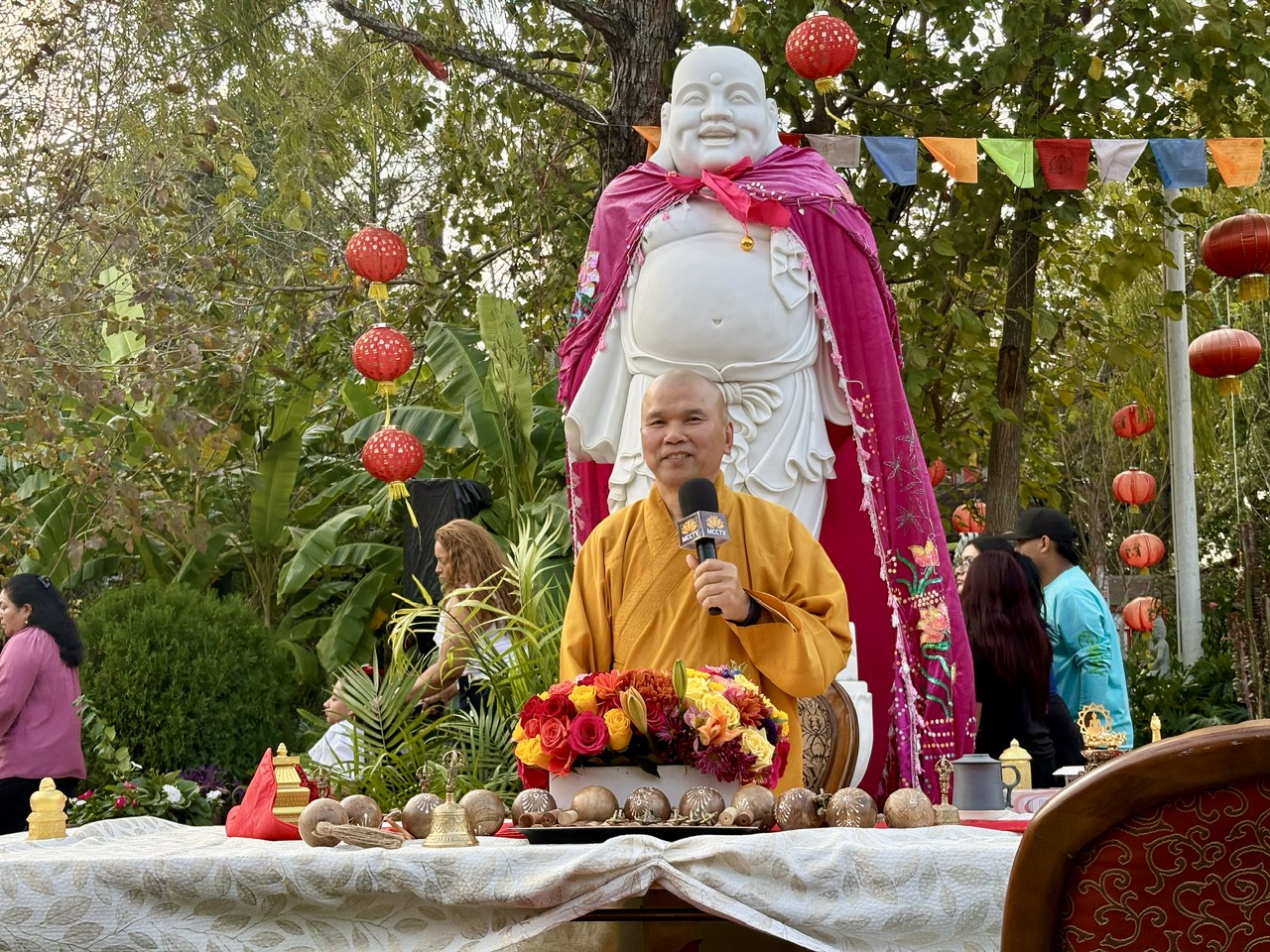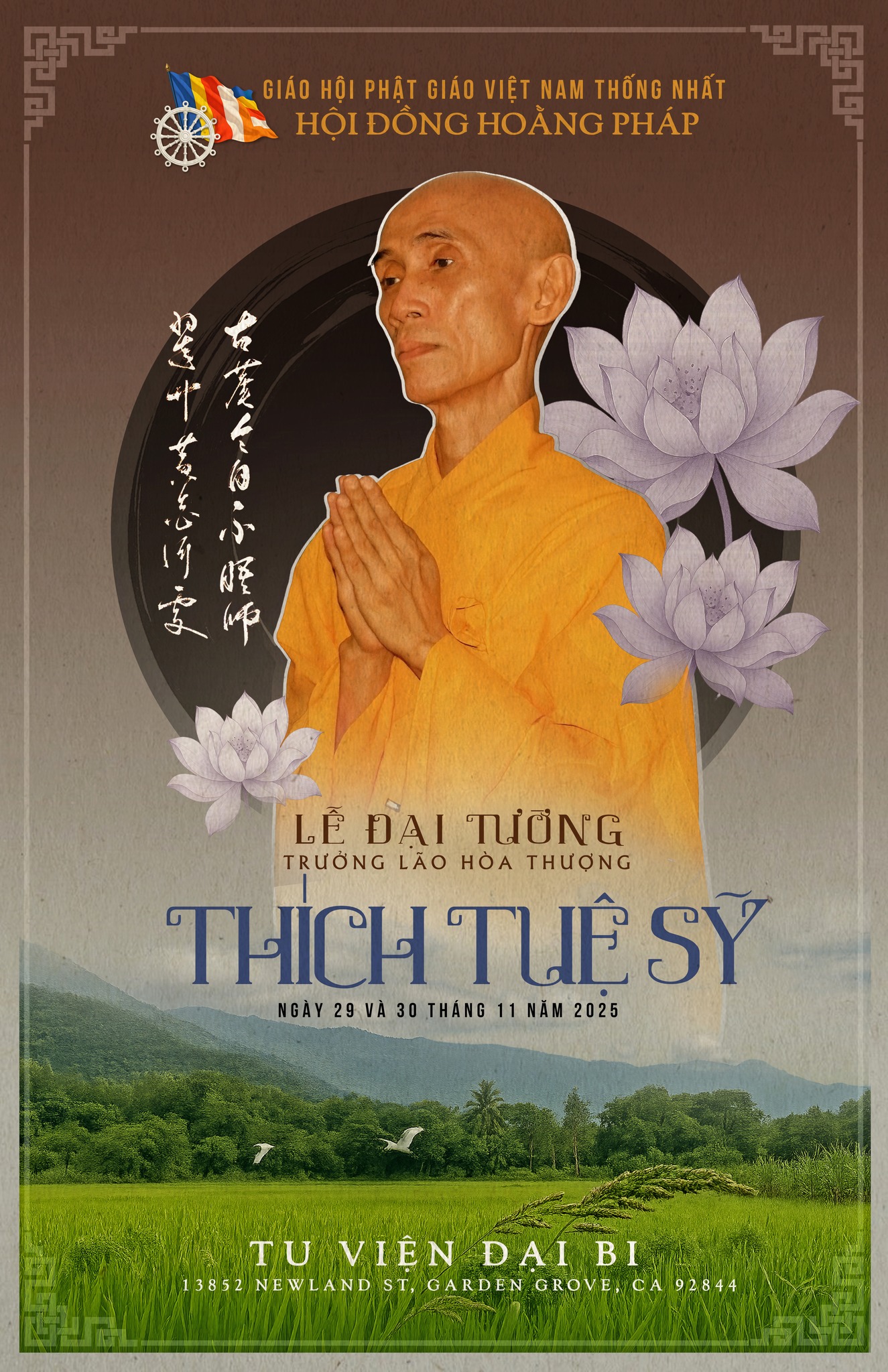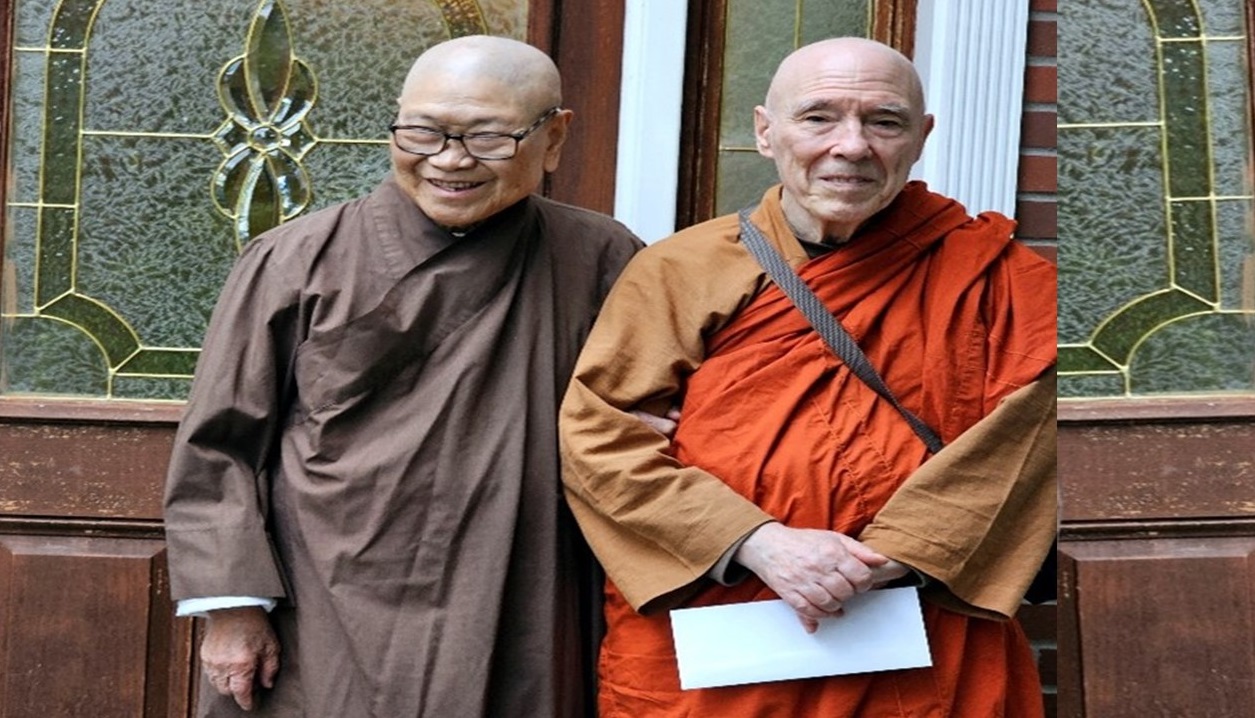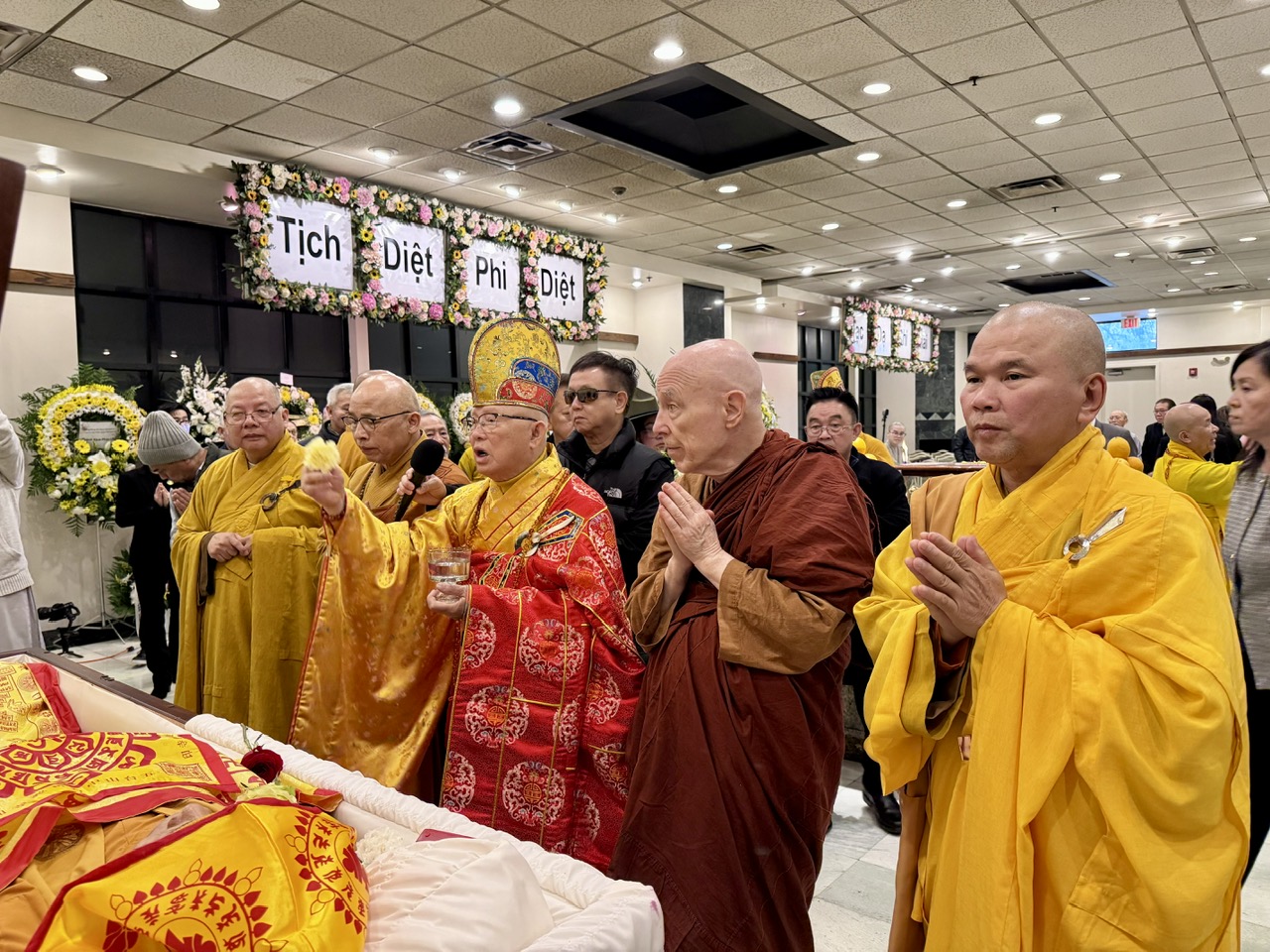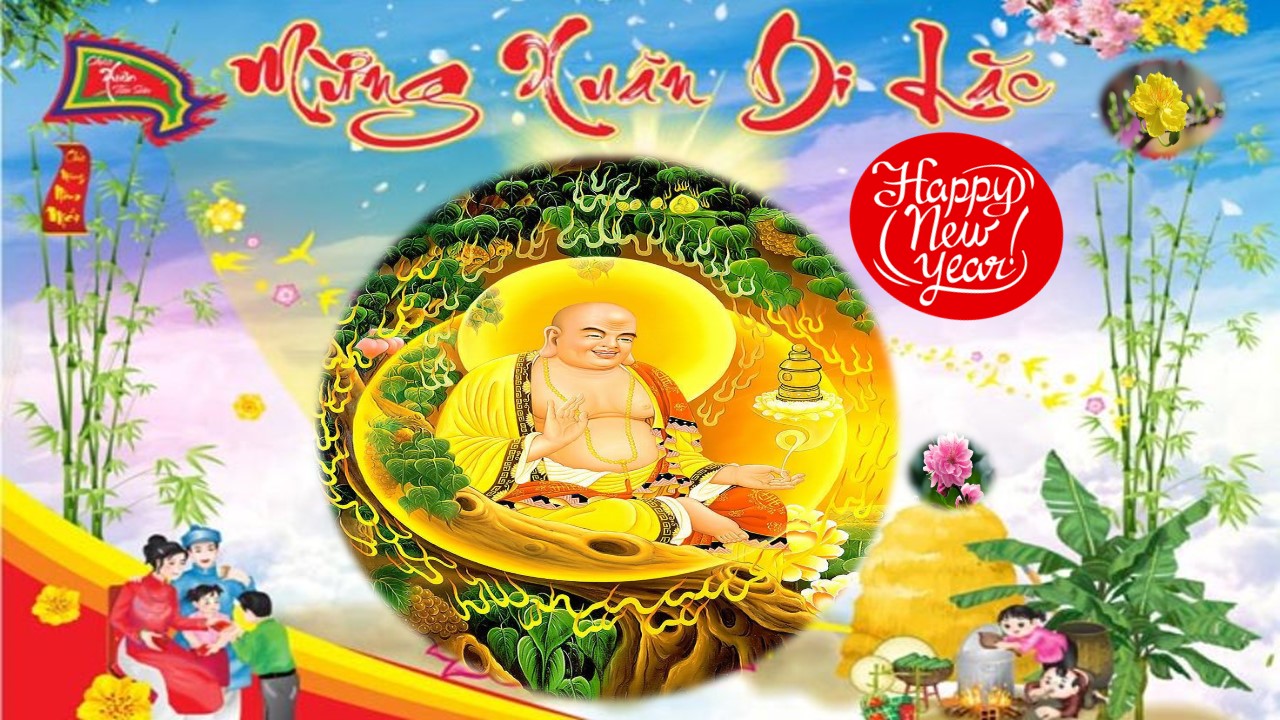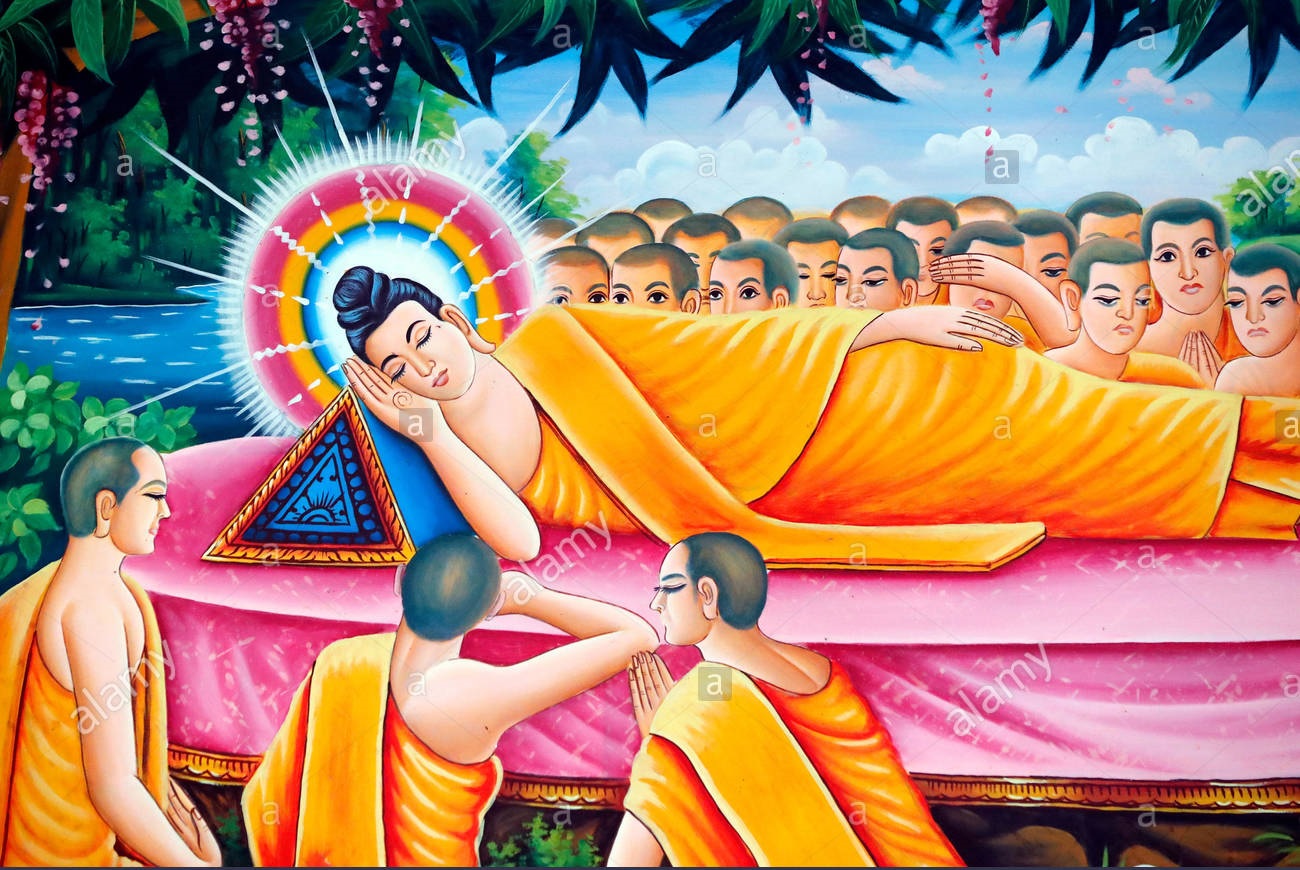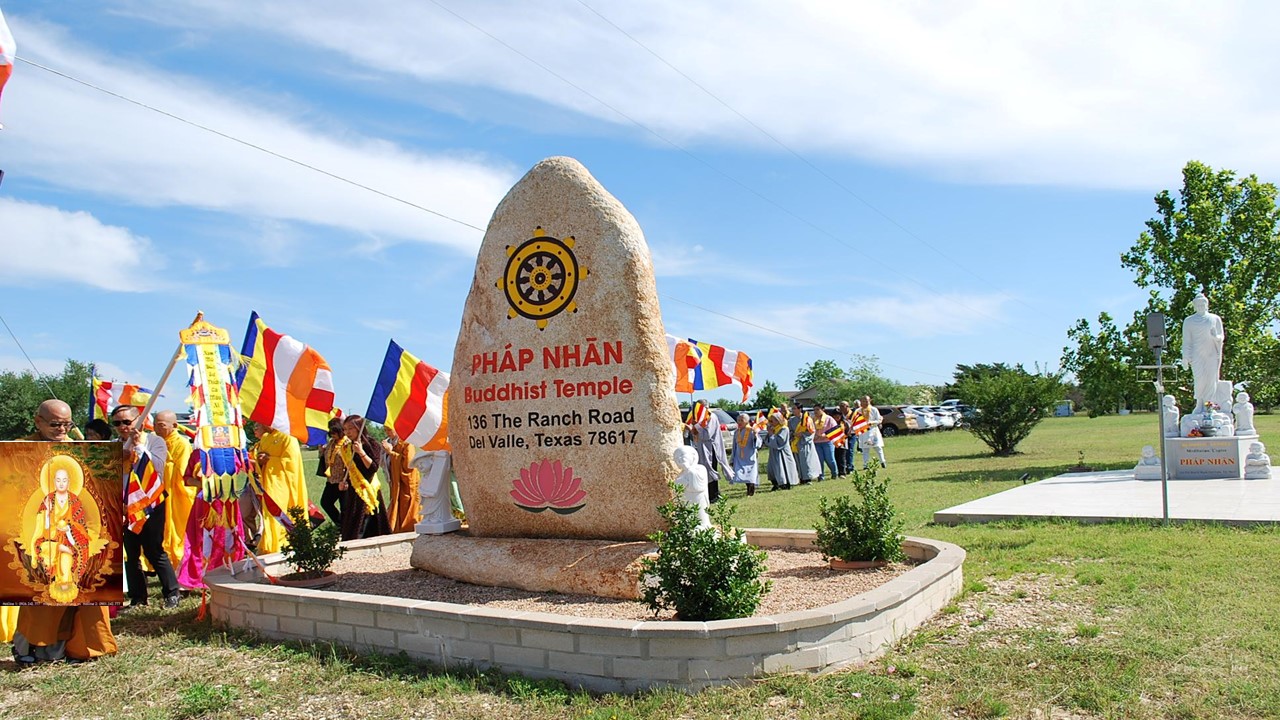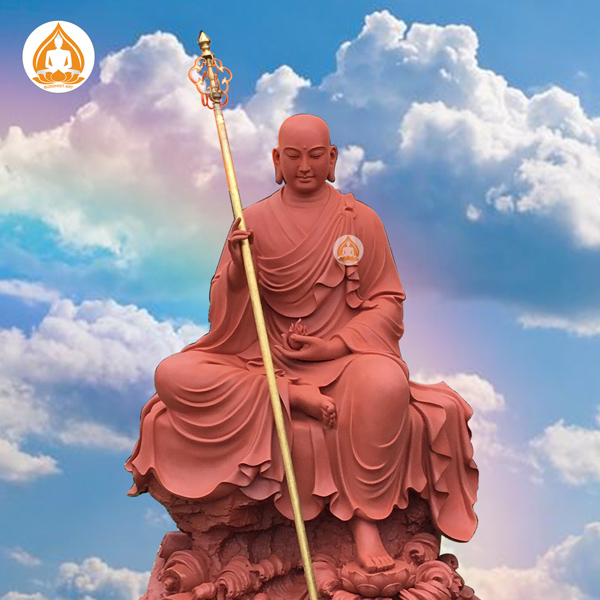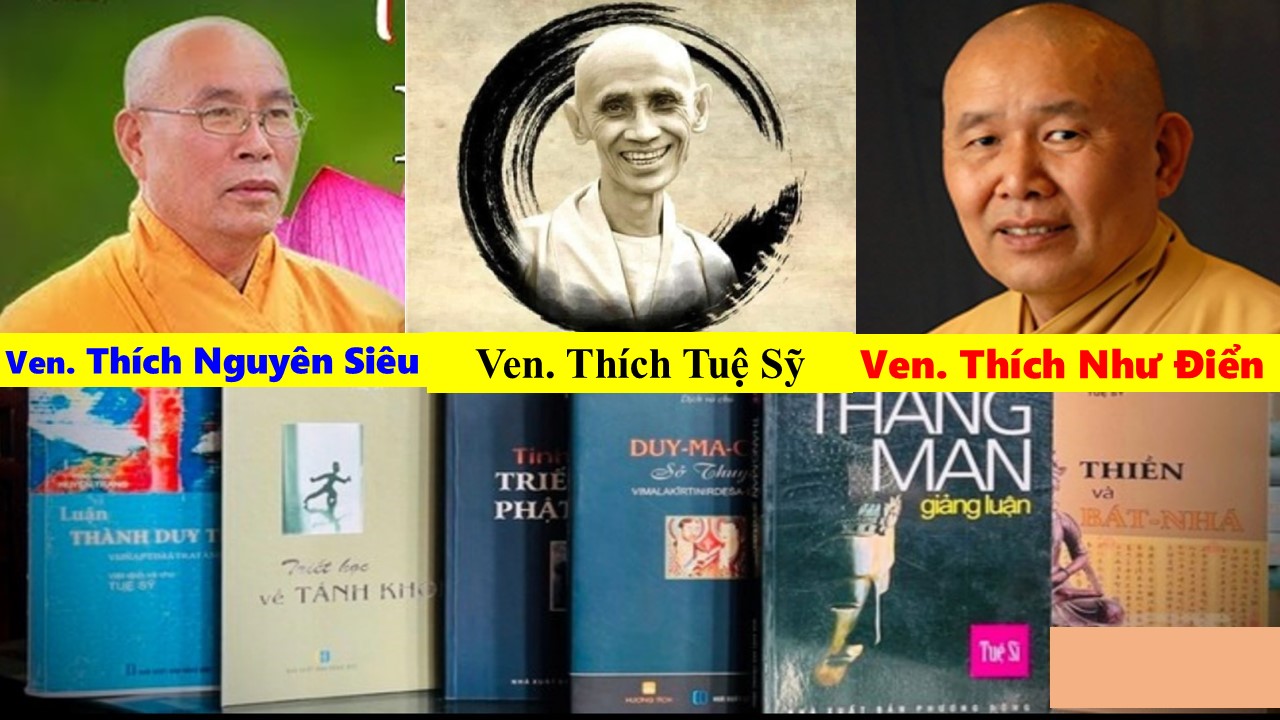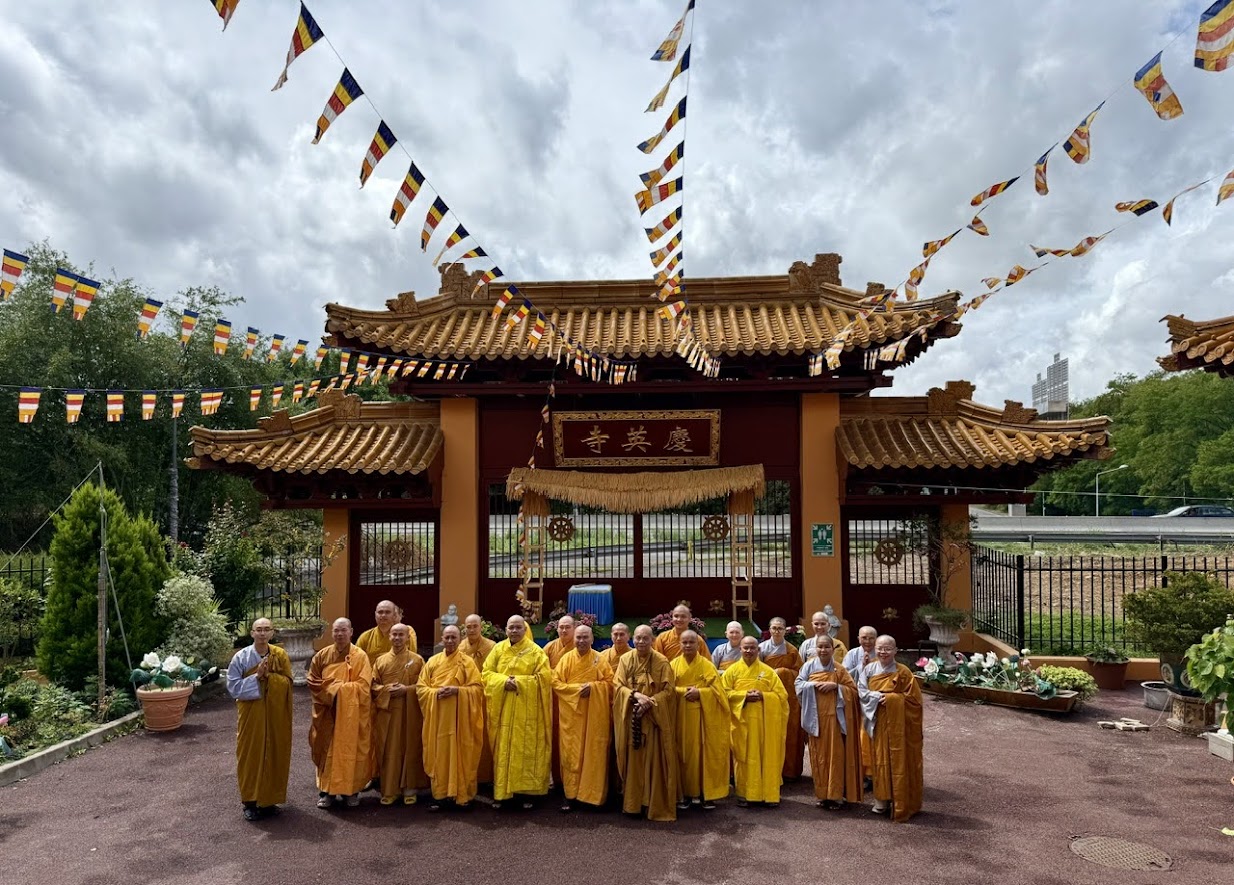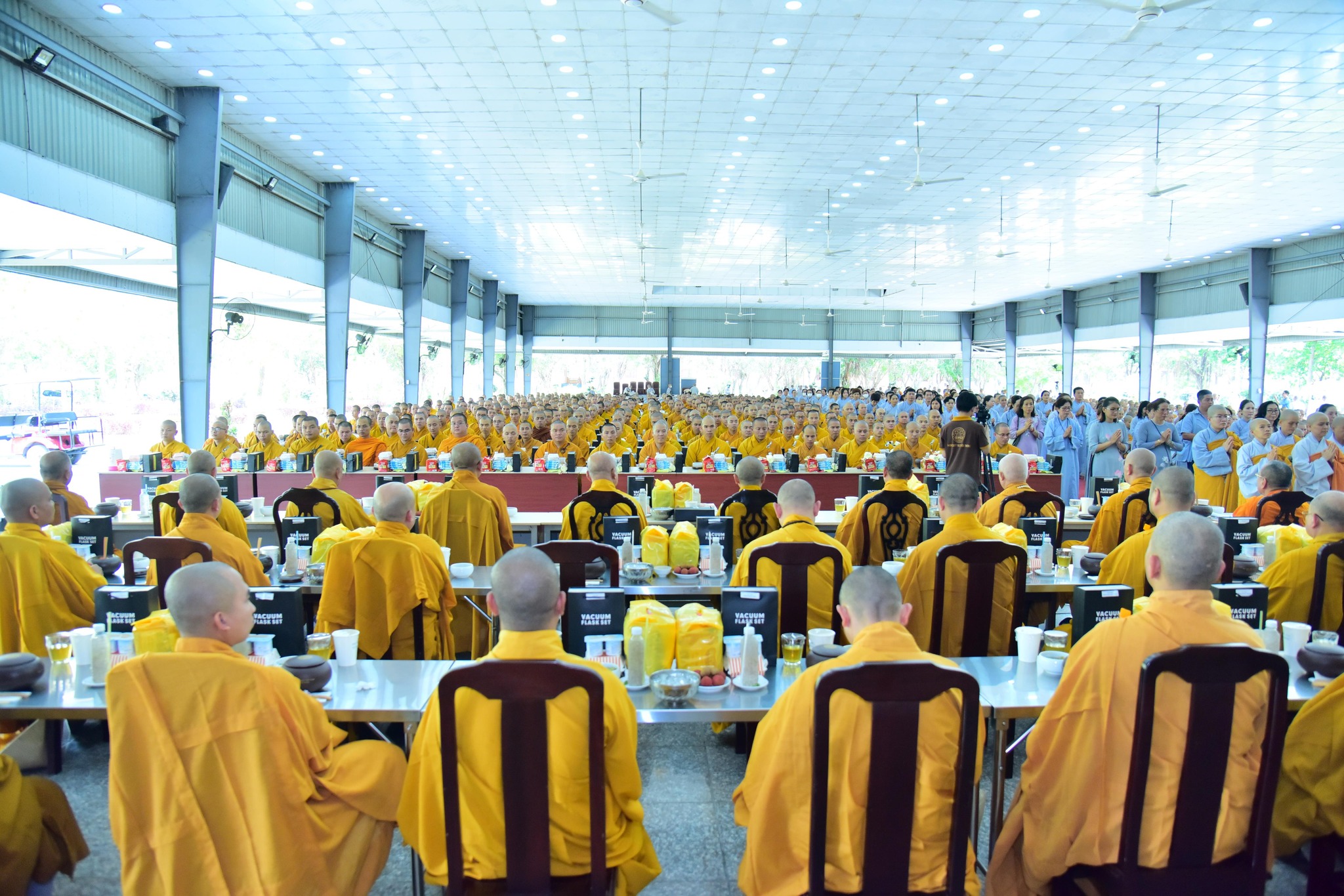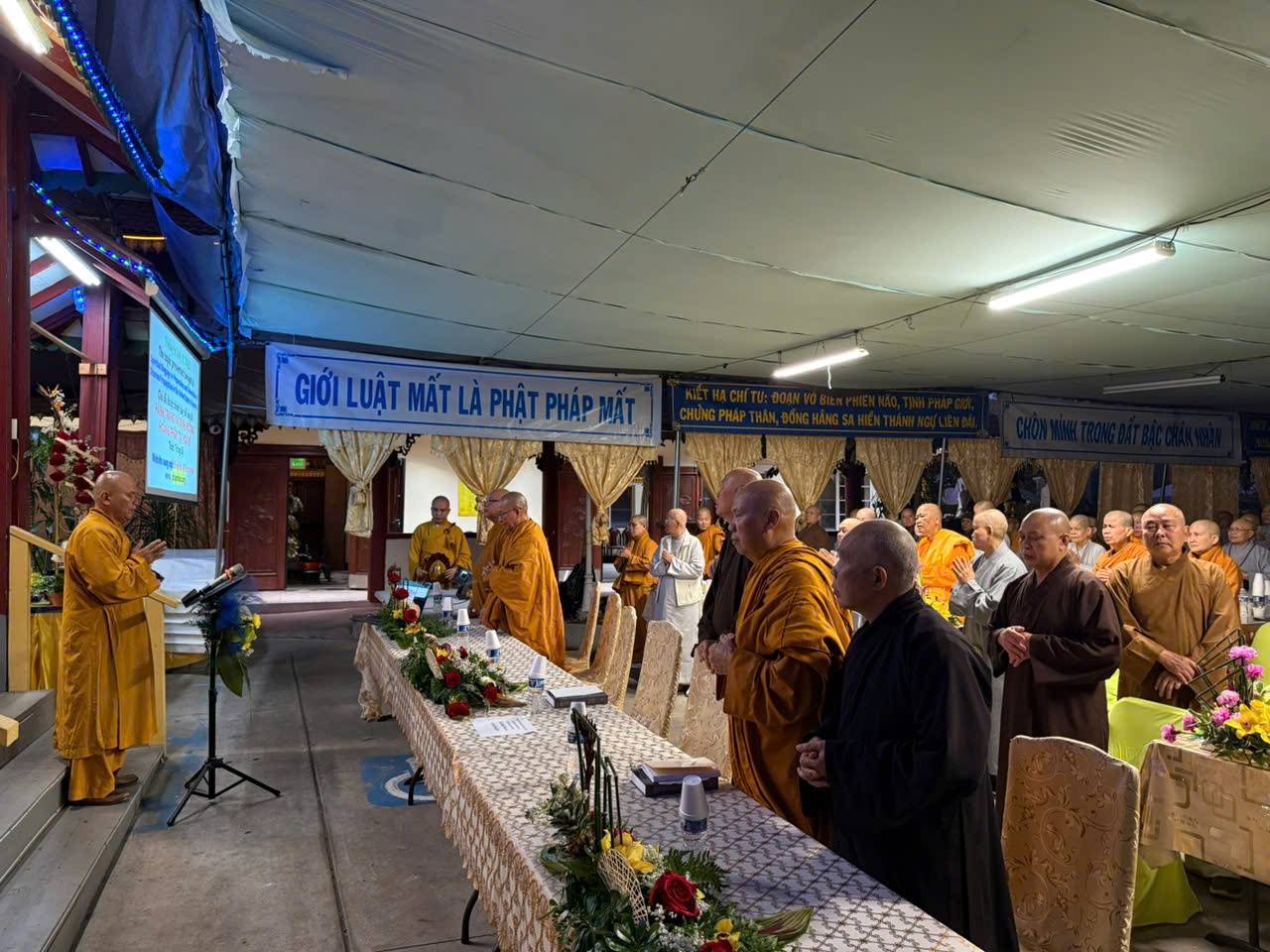Ven. Thích Trừng Sỹ

COMPASSION SPRING
We all know that a year with three hundred and sixty-five days begins from on the 31st December of this year to the 1st January of next year. In those transitional days, there are two remarkably transitional days, that is, the final day of the old year and the first day of the New Year. Beside them, we still have a night of transition, an hour of transition, a minute of transition, etc., called as the New Year’s Eve, the Hour’s Eve, the Minute’s Eve, etc. From here, the Lunar New Year’s Day begins to appear, we have the Spring Festival. In the Spring Festival, there are usually three days of festivities or more, everyone celebrates the Spring and enjoys Festival together.
According to the thoughts of developing Buddhism, Maitreya Buddha appears to be born on the First Day of New Year, especially the Minute’s peaceful, holy and joyful Eve. In these peaceful minutes, everyone has common wishes to pray to start from the beginning of the year to the end of the year, the good of coming, the evil of going, family of happiness, every person of joy, the world of peace, human beings of tranqulity.
As you know Phật Di Lặc in Sanskrit is Maitreya Buddha. Buddha is derived from Budh; Budh means awareness, understanding, enlightenment, etc. Buddha that means awakened, enlightened, steady and carefree One is translated into Vietnamese as Phật or Bụt. Maitreya (Sanskrit) that is derived from Maitri or Mitra (S.) means joyful person and joy, lover and love, understander and understanding, etc., is translated into Vietnamese as Di Lặc. Phật Di Lặc or Maitreya Buddha means Person with body and mind of peacefulness, cheerfulness, love, understanding, friendliness, closeness, share, help, etc. Indeed, Maitreya Buddha, who is the embodiment of cheerfulness, joyfulness, abundance, fullness, roundness, vitality, brightness, goodness, happiness, love, understanding, etc., has the capacity to donate flowers and fruits of peaceful joy, happiness, love and understanding to many people.
Born on the First Day of New Year, Maitreya Buddha is the symbol for love, forgiveness, tolerance, generosity, joy, etc. In everyday life, we see Maitreya Buddha specifically in the flesh around us, that is, father, mother, teacher, friend, spouse, child, and each of us. Parents are cheerful, and so are children. Parents are peaceful, and so are children, and vice versa, children are happy, and so are parents, etc., by applying and practicing the Buddha Dharma in their daily life. Living a life of joy, love, peacefulness and happiness for the many, each of us is a Maitreya Buddha in the present as well as in the future to offer peacefulness and happiness to oneself and the other people right in this life.
Through the above meanings, the writer boldly puts the title for the writings as “the Compassionate Spring.” This theme is divided into two parts: “The Spring and Compassion.” “Compassion” is going to be presented below. “The Spring” is presented here. “The Spring” consists of “Spring time, Spring space, Spring situation and Spring mind.”
“The Spring time” in the writings includes the final days of the old year and the first days of the New Year. In the final days of the old year, people that are off school, office, work are busy shopping, cleaning, making cakes, cooking, tidying up, arranging flowers, decorating the altar of the Buddha and that of paternal and maternal Ancestors, so on and so forth. In the first days of the New Year, people that are so free, joyful and exciting go to Temple for burning incense and prostrating themselves before the Buddha, Bodhisattvas, Dharma guards, good gods to ask for a New Year fortune by praying Them to prove, safeguard and help their relatives and beloved Ones in their families be joyful and happy from the beginning of the year to the end of the year.
If being a Christian, I go to Church for celebrating and praying to God, for protecting and helping my immediate family, other relatives and me to be full of my healthy and peaceful body and mind.
After finishing going to Temple or Church, we continue to visit our families of both paternal side and maternal sides and celebrate Grandparents’ ages with our wishes for deep affection, friendliness, closeness, lovableness, goodness and fineness as those who live happily die peacefully.
We know an ancient tree has its roots, stem, twigs, branches, leaves, etc. Parents are the roots, the stems; we are the twigs, branches, leaves, etc. Its roots and stems nourish the twigs, branches, leaves, and help the latter develop verdantly, shade from the sun, bloom, fruit in order to donate life natural, verdant and nice environment. Conversely, the roots and stem of the ancient tree are not solid and not vigorous, its twigs, branches and leaves are easy to fall, to break off, to wilt and wither. If the tree has fruits, its fruits are not sweet and not delicious.
Likewise, parents that live their lives of virtue, cultivation and practice apply the Buddha’s teachings in their daily life by not doing the evil, doing the good, purifying their peaceful bodies and minds in order to nurture loving-kindness, give the Dharma and riches to the needy, live truly and confidently, create faith and prestige for many people. Doing like this, parents that are peaceful and happy people have the capability to offer flowers and fruits of peacefulness and happiness to their children and teach them to distinguish between the good and evil things; the good things they continue to do, maintain and develop, the evil things they practice eliminating gradually and completely.
Therefore, parents play a very important role in educating their children. Parents who are the happy foundations of family live their moral lives, their children have strong influences on parents’ good examples. Happiness of parents is mainly that of children and peaceful joy of children is principally that of parents.
Although family education does not have school and class, it is the essential foundation of society. In family, parents who are teachers have taught love, their children that are pupils, students have learnt about love. The love between parents and children that are connected very closely with one another create the happy strength of the family. It is the strong factor that children should always owe parents a great debt of gratitude and be grateful to parents for the latter’s giving birth and nurturing.
Indeed, whether what we do or where we live, whether we are province chiefs or sheriffs, whether we are Buddhists or non-Buddhists, but grandparents and parents are people whom we esteem and adore most in the world. Vietnamese folk verse writes:
“There are parents and us;
The former are the roots, the latter are the branches.
Our bodies are like green leaves,
Thanks to the roots joining sap, the branches get fresh.”
To emphasize the above-mentioned meanings, Venerable Monastics usually have taught: “Those who respect parents mainly venerate the Buddha.” “Those who worship parents principally venerate the Buddha.” Indeed, the role of parents is very important. “Parents who live at home are considered as the Buddha lives in the world.” It is because of the above reasons that after having already finished going to Temple or Church, we often visit and celebrate Grandparents’ ages on the occasion of Tết – the early Spring Festival.
According to the tradition of Asian people, especially Vietnamese, after having already visited our parents of paternal and maternal sides, we continue visiting graves, burning incense and praying to the dead that protect and help older and younder descendants peacefully and safely. According to the philosophy of human life, the living and the dead correlate and interrelate very closely with one another. They can be our grandparents, parents, spouses, children, grandchildren, etc.
Therefore, where descendants live is there grandparents live, or where the latter live is there the former live. That means descendants do the good things, grandparents and parents affect good reputation. The former do the evil things, the latter affect bad reputation. Conversely, grandparents and parents are people who have their blessing and virtue to leave them for descendants. The former are people who lack blessing and virtue, in the present as well as in the future the latter reap the seeds of suffering. Of course, descendants that try their best to cultivate and practice the Buddha’s teachings in their daily lives can transform suffering into joy and happiness.
As conscious people, who do not want their family to be happy, their descendants are peaceful joy. Understanding like this, we try to do something good and virtuous to leave blessing and virtue for our descendants. Although virtuous blessing that is invisible cannot be seen, it plays a very important role in cultivating and nurturing the spiritual life of each of us. It is regarded as the power of spiritual magnetic field being transmitted from this generation to that generation. Blessing and virtue that can be seen are thanks to manifestation through warm life and happy family, our descendants, who are older and younger gain peaceful joy, learn to reach to graduation, also have good occupation, stable employment and jobs, and get married.
If being lay Buddhists, descendants do good business with their minds of protecting the Dharma. If being Monastics, descendants spend much time cultivating, practicing and preaching the Dharma to bring the peaceful path to life and help life be joyful and happy. If you are Buddhists or not Buddhists, you can build your happy family, joyful descendants by honoring Grandparents, attending to parents, not doing the evil things, doing the good things, purifying your peaceful and clean body and mind in order to bring blessing and virtue for yourselves and the other people right in this life.
“Spring time” has been completely presented above, next, “Spring space, Spring situation
and Spring mind” are presented together. “Spring space” is the space of wide and exciting festival. “Spring situation” is the situation of peaceful and joyful festival. In there, everyone together celebrates the Spring and Festival merrily. “Spring time, Spring space, Spring situation and Spring mind” have very close relationships with one another and cannot separate together. They which can be separated are because the writer wants to present every one of them in order to be easy to write, easy to read and easy to understand.
In “Spring time, Spring space, Spring situation and Spring mind,” “Spring mind” plays a very important role in creating all living things and living beings in the universe, including creating “Spring time, Spring space and Spring situation.”
“Spring time” is the mind of peacefulness, joy, wideness, largeness, etc. This mind, which is shown for both the mind of individuality and the mind of community, covers the whole country and more widely. When our “Spring mind” has already been peaceful, “Spring time, Spring space and Spring situation” certainly become peaceful, and vice versa, when “Spring mind” is not peaceful, we surely do not obtain “Spring time, Spring space and Spring situation.” “Spring mind” is considered to be so important.
“Spring in oneself, Spring in the universe,
Peace in oneself, Peace in the world.”
Up to this point, “Spring mind” is understood as “the Compassionate Mind.” The theme of writing lesson is “the Compassionate Mind.” The “Spring” has just been presented above, next, the writer presents two characters of “Loving-kindness and Compassion” (Pāli: Mettā and Karuna).
“Loving-kindness and Compassion” in the Four Sublime States of Mind (Sanskrit: catur-apramāṇavihāra; Pāli: catur-appamañña-vihāra) are called as “infinite Loving-kindness, infinite Compassion, infinite Joy and infinite Indiscrimination.” In the writings, the writer only presents “infinite Loving-kindness and infinite Compassion.”
According to the philosophy of Buddhism, “the Infinite” (Appamannā) means boundlessness, limitlessness, non religious differentiation and non racial discrimination, etc. “Loving-kindness and Compassion” in Buddhism have the capacity to accept and cover all the different doctrines, thoughts and philosophical theories in life. They not only circulate and turn in motion in “Spring time, Spring space, Spring situation, but also in Summer time, Summer space, Summer situation, Autumn and Winter.” “Loving-kindness and Compassion” in Buddhism not only blend with the four seasons: Spring, Summer, Fall, Winter, but also the three periods: Past, Present and Future. They are timeless.
Indeed, “the Compassion Spring” exists everywhere and every place when each of us leads a life of mindfulness and awareness, steadiness and freedom by practicing and applying the Buddha Dharma in his or her everyday life to bring peacefulness and happiness to the many.
According to common definition, “Loving-kindness means to give joy to people; Compassion means to help them lessen suffering.” Relying on the above definition, we have many next definitions as follows: “Loving-kindness is flower and fruit of peaceful joy; Compassion means to offer them to people. Loving-kindness is the substance of love; Compassion means to offer it to the other people. Loving-kindness is the seed of freshness and coolness; Compassion means to offer it to people. Loving-kindness is the seed of non discrimination; Compassion means to offer it to people. Loving-kindness is the power of cultivation of ourselves; Compassion means to offer it to the other people, etc.”
Loving-kindness and Compassion are defined like this for easily understanding, but in fact, Loving-kindness and Compassion that go hand in hand with each other and with the other things link very closely. In Loving-kindness, there is Compassion and in Compassion, there is Loving-kindness. In Loving-kindness, there are the other stuffs such as Joy and Indiscrimination, peacefulness and happiness, steadiness and carefreeness. Those who understand clearly and have a thorough grasp of Loving-kindness and Compassion understand clearly and have a thorough grasp of the remaining things because in Loving-kindness and Compassion there are enough characteristics.
Loving-kindness and Compassion that are flowers and fruits of love go together with understanding. Coming here, Loving-kindness, Compassion and Wisdom go abreast. Those who cultivate Loving-kindness and Compassion always apply appropriately to their daily lives.
For example, I have the habits of smoking and drinking alcohol, my relatives and beloved ones advise me to quit smoking and drinking it, but I insist on smoking and drinking it, I disapprove of quitting, I say a joke: “I would rather give up my lover than quit smoking and drinking alcohol, I definitely do not give up.” One day, we have good conditions to go to attend a Spring Retreat for a week and listen to Dharma talk of Zen Master Thich Nhat Hanh, who preaches the Dharma and deals with the matters of “loving people” and “loving us.”
“Loving people,” first of all, we have to “love us.” “Loving father and loving mother, we also must love us.” “Loving us” that looks like this is very solid. “Loving us,” we must protect our lungs, liver and heart, etc. Working the whole day and night, our lungs, liver and heart never stop working for a second a minute. Wanting to live longer and more healthily, we have to practice quitting smoking and drinking alcohol gradually. Quitting doing it until we do not smoke and drink it any longer because smoking and drinking alcohol have the ability to damage both our bodies and minds.
At this point, we also should know “knowlege” and “intellectuality.” “Knowelege” is the theory that we have learned; “Intelectuality” is wisdom, cultivation, application and the practice of knowledge and theory that we have known and learnt. Learning without application and practice is that we only achieve the good results of 50%. Learning with practice and application of understanding, knowing and knowledge that we have learned into our daily lives, we achieve the good results of 100%.
Here the emphasis is on application and practice. Learning and practice that go together bear the perfect meanings and values. Thus, when speaking and doing go abreast, what we say is that people hear, what we do is that they admire, and what we teach is that they understand, and all follow our teachings together. At that time, our prestige and power towards the masses increase and are very valuable.
Knowing to smoke and drink alcohol is harmful to health, we keep smoking and drinking it, then that is the know about knowledge of the vain theory without practice. In contrast, knowing to smoke and drink alcohol is harmful to health, we must stop and let go of it, then that is the know about cultivation and practice. Understand like that, we stop quitting smoking and drinking alcohol and beer. From here, our health and longevity improve and get healthy.
Loving like this is that loving go together with understanding. Loving us is that we try to stop smoking and drinking alcohol; understanding us is that we quit smoking and drinking alcohol and beer to protect our health, life and longevity. After having already loved and understood, we can spread our hearts out to offer our love and understanding to the other people. The love that everyone understands, knows, practices and applies in their everyday lives is the authentic love goes together with the understanding in order to bring peacefulness and interests to the many right in the present life.
In love of the happy pair, on the occasion of the Spring, going out with friends, I would like to love and be acquainted with a person whom I understand clearly. This person, who has the ability to say loving words, listen deeply, understands the other people and herself or himsefl. Loving a person, first of all, I have to understand the person I love. Do I consider my lover who accords with my opinions? If not according with me, she or he is only my fellow traveler. If according with me, she or he is my lover who I choose to make a hundred-year friend.
When having good conditions to live each other, spouse lives in harmony and respects opinions together. We know commonly the initial love between two people is very beautiful and very warm, but gradually their beauty and warmness are reduced, sometimes extinguished and lost all.
Wanting to uphold and light up the beauty and warmness for families of both paternal and maternal sides and for herself or himself, husband and wife have the responsibility to sympathize, help and trust together by cultivating and contemplating like this.
Wife’s beauty is mainly husband’s beauty, and vice versa, his warmth is mainly her warmth. The beauty and warmness of the couple are principally the happy foundations of family and children. In the physical beauty and spiritual beauty, in the beauty of body and that of disposition, the spiritual beauty and the beauty of disposition are the utmost beauty, that is, the moral beauty.
Living together, husband and wife sometimes quarrel with each other. To end the argument, first of all, the spouse that must be really present in order to have a heart-to-heart with each other share, express and say the difficulties, suffering and pain. What she says is that he listens and what he says is that she acknowledges and listens. Saying and listening to each other by the mind of love and understanding, both wife and husband recognize: “My difficulties are mainly your difficulties, and your suffering is mainly my suffering.”
Recognizing like this, wife and husband gradually transform suffering and pain into peacefulness and happiness. She and he are peaceful and happy, their children and families of two paternal and material sides are also peaceful and happy.
On the occasion of the Spring, we learn, understand and apply the tenets of Loving
Kindness and Compassion in our lives to bring peaceful joy and happiness to the many. Loving-kindness and Compassion are applied and practiced not only in the Spring, but the Summer, Fall and Winter as well. In general, Loving-kindness and Compassion are practiced in four seasons – all year, everywhere and every place. Those who apply and practice Loving-kindness and Compassion in their daily lives have the capability to bring peacefulness and happiness to the other people and themselves.
In the definition of three Triple Gems: Buddha, Dharma and Sangha: The Dharma that has preached by World-Honoured One and His holy Disciples is very practical in the present, is beyond the time. Those who have good conditions to come to see, to hear, to understand, to practice, to taste and enjoy peaceful flavours of the Dharma. The Dharma here represents Loving-kindness and Compassion.
“The Buddha’s wonderful Dharma,
Seven grains of cooked rice spread out over ten directions,
Offered to all.
Loving-kindness and Compassion are limitless.”
(A Gatha given to human beings)
Practicing the above Gatha diligently, we can reap the fruits of peaceful joy and happiness in the present moment. Thanks to the Buddha’s wonderful Dharma, the more we practice, the more we taste the Dharma peace by depending on the majestic energy of Great Assembly to learn, to cultivate, to preach the Dharma and to help life. At this point, Venerable Ones usually have stressed that “The Virtue of Assembly is like the ocean.”
During the time of offering lunch meal together with them, with his mind of mindfulness, a practitioner who picks up seven grains of cooked rice with chopsticks or spoon to put them into a bowl with little water pray for the above Gatha. Attendant who welcomes and carries the bowl to a small altar outside recites a Verse of animal:
“By drops of clear water,
By the compassionate heart,
Today, I offer this cooked rice,
Wish all kinds of animals peace and joy.”
(The writer)
After finishing reciting the Verse, he offers the cooked rice to kinds of birds and ants. Thanks to the energy of Loving-kindness and Compassion of Great Assembly, seven grains of the cooked rice can spread out over many directions.
Moreover, Loving-kindness and Compassion in Buddhism are not the vain theory, both are not a gift granted by a god, but they are speeches, thoughts and actions of mindfulness, practicality and specificity, that is, not to do the evil, to do the good, to purify one’s clear mind by applying and practicing the Buddha’s teachings in one’s everyday life.
Thus, Loving-kindness and Compassion, first of all, must be derived from the boundless, immense and wide mind as a gentle mother hugs and nurtures her unique child. Her compassionate heart which fills with the loving energies has the ability to permeate and make an outburst of child’s cries and temper cool. Cultivating our compassionate heart well, we can transform hatred, anger, temper and tension into friendship, love, coolness, content, calmness, etc. The fifth Verse of Dhammapada writes:
“In this life,
Hatred cannot cease hatred.
Only compassion can cease hatred.
This is the timeless law.”
Depending on the above verse of Dhammapada, if members, workers, officers in their families, schools, offices and in the governmental Cabinet understand and practice the tenets of Loving-kindness and Compassion their daily lives, they can transform angry people into close people, unfriendly people into friendly people, other religions into friendly religions, adversarial nations into friendly nations in order to together cooperate with economy, education, science, commerce, etc.
According to Buddhist thoughts, people have their angry and hatred minds, we cannot use our angry and hatred minds to heal and transform them. Because the more hatred is used to deal with hatred, the more hatred increases, and vice versa, the more Loving-kindness and Compassion are used to deal with hatred, the more hatred deceases. Therefore, people have their minds of anger and hostility, we can only use our compassionate minds to transform them, from there, they become good and close friends who collaborate strongly with us.
In brief, through the above mentioned things, we know Loving-kindness and Compassion in Buddhism that do not have boundary, frontier and limit go beyond the guise of religion, are very practical in the present, are the living philosophy, are breath, are life and are our blood vessel. If learning, understanding, applying and practicing the tenets of Loving-kindness and Compassion in our daily lives in the right place and the proper time, we can contribute to building every happy person, every joyful house, peaceful and prosperous society right in this world.
On the occasion of the Spring coming, the topic of “the Compassionate Spring” that is written and presented here makes a gift of the beginning of the Spring offer and donate it to Venerable Monastics, lay people, Buddhists or non Buddhists in order to make baggage and provision for life. Living is peaceful, steady and carefree in every conscious breath and joyful smile. Treasure our remaining life is to make the many peaceful and helpful. Those who have enough good conditions to learn and practice the Buddha Dharma diligently can reap flowers and fruits of authentic joy and happiness right here and now in the present life.
We wish you and your beloved ones would dwell in steadiness and permeate the light of World – Honored One’s Loving-kindness and Compassion, and enjoy the Spring of warm and perfect Maitreya.
Ven. Thích Trừng Sỹ.
Xuân Từ Bi
